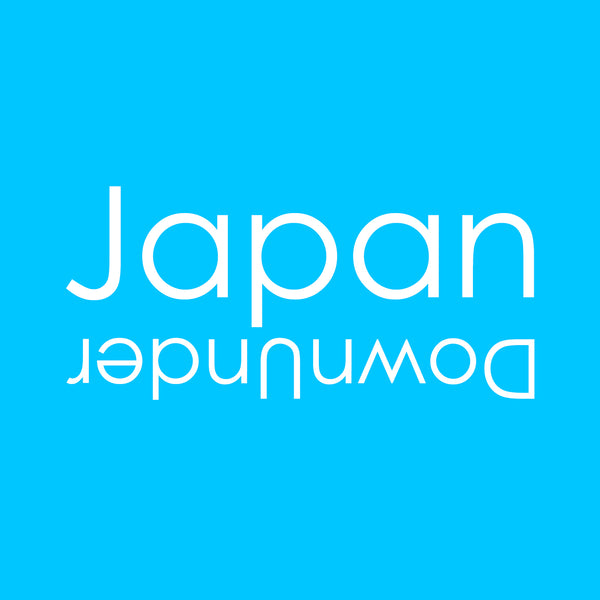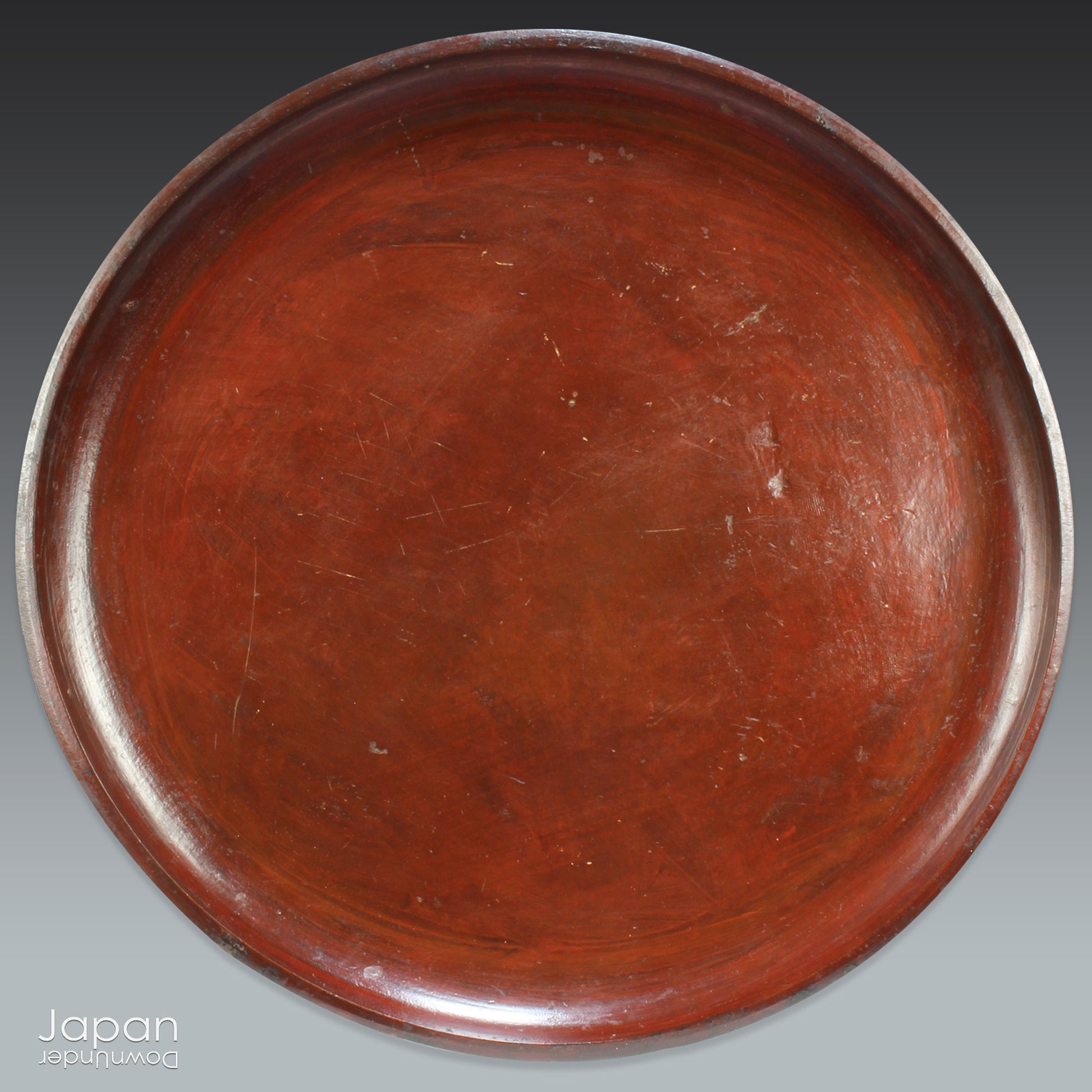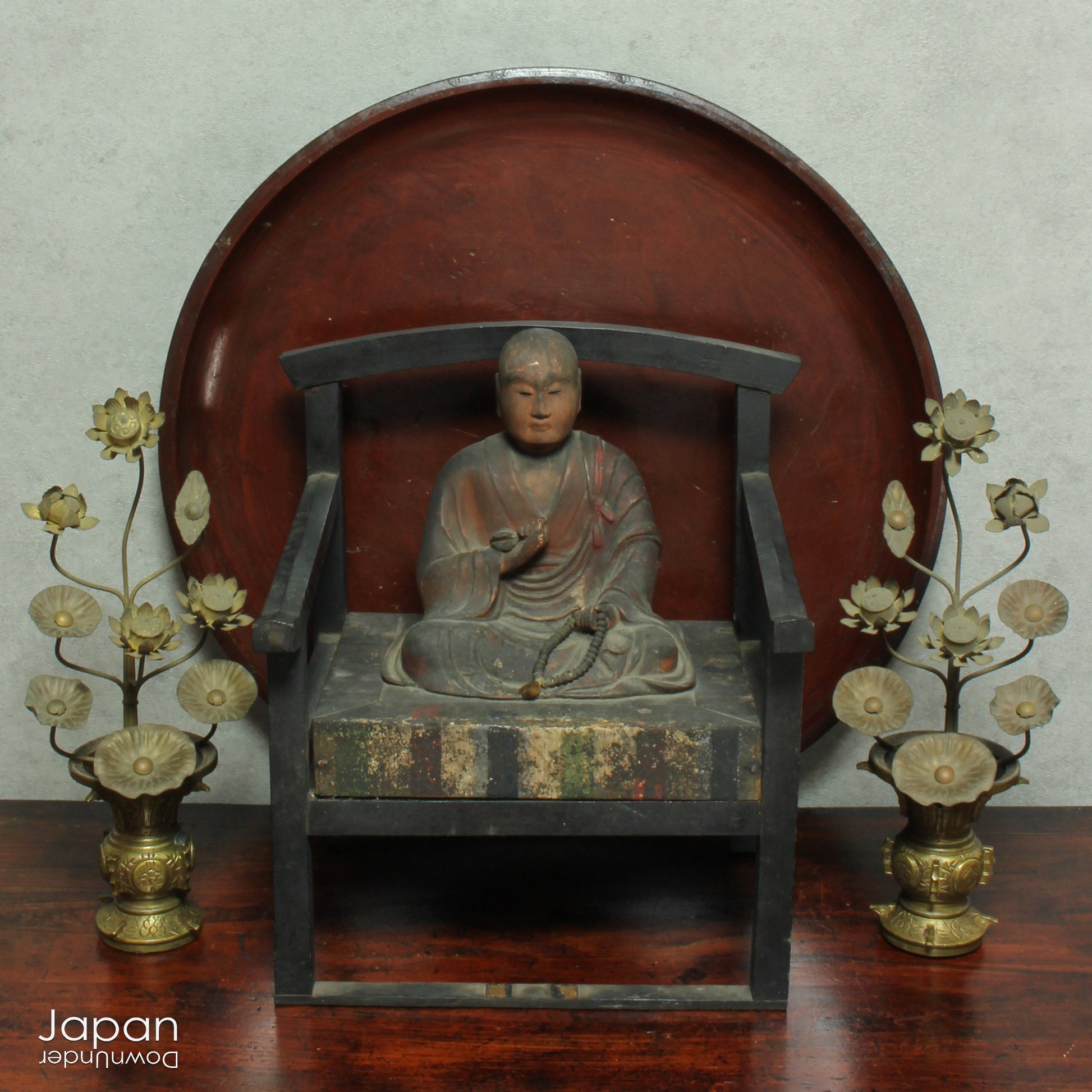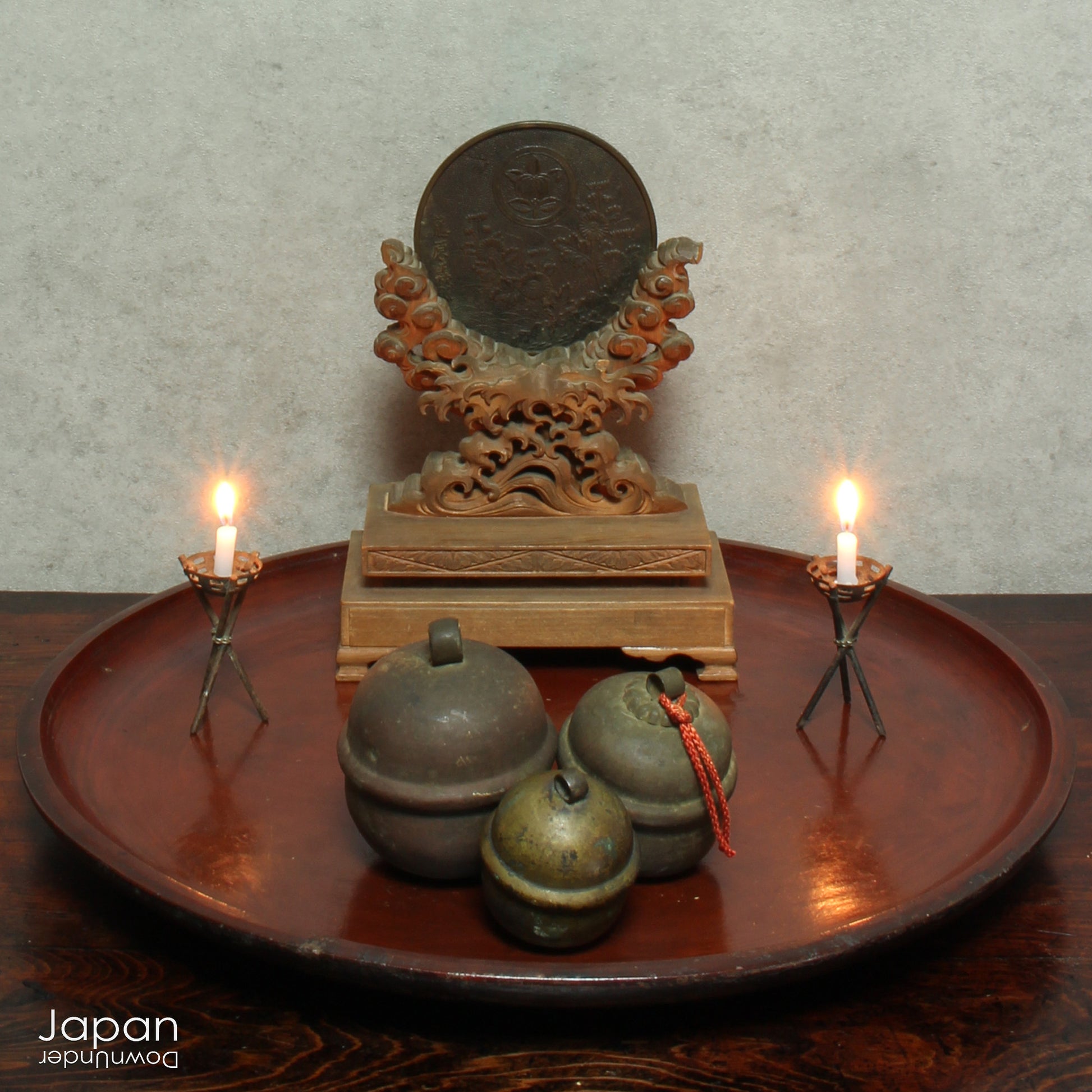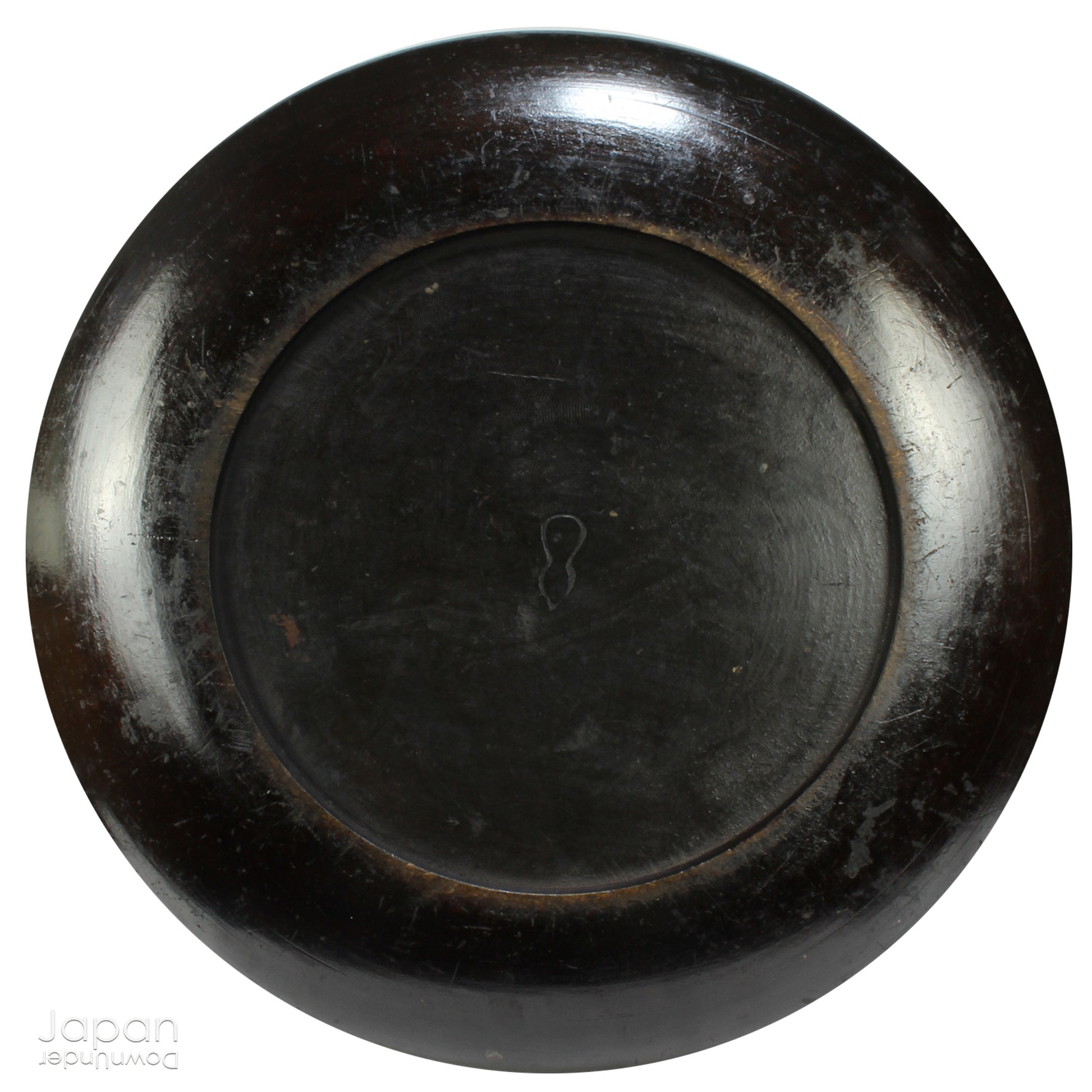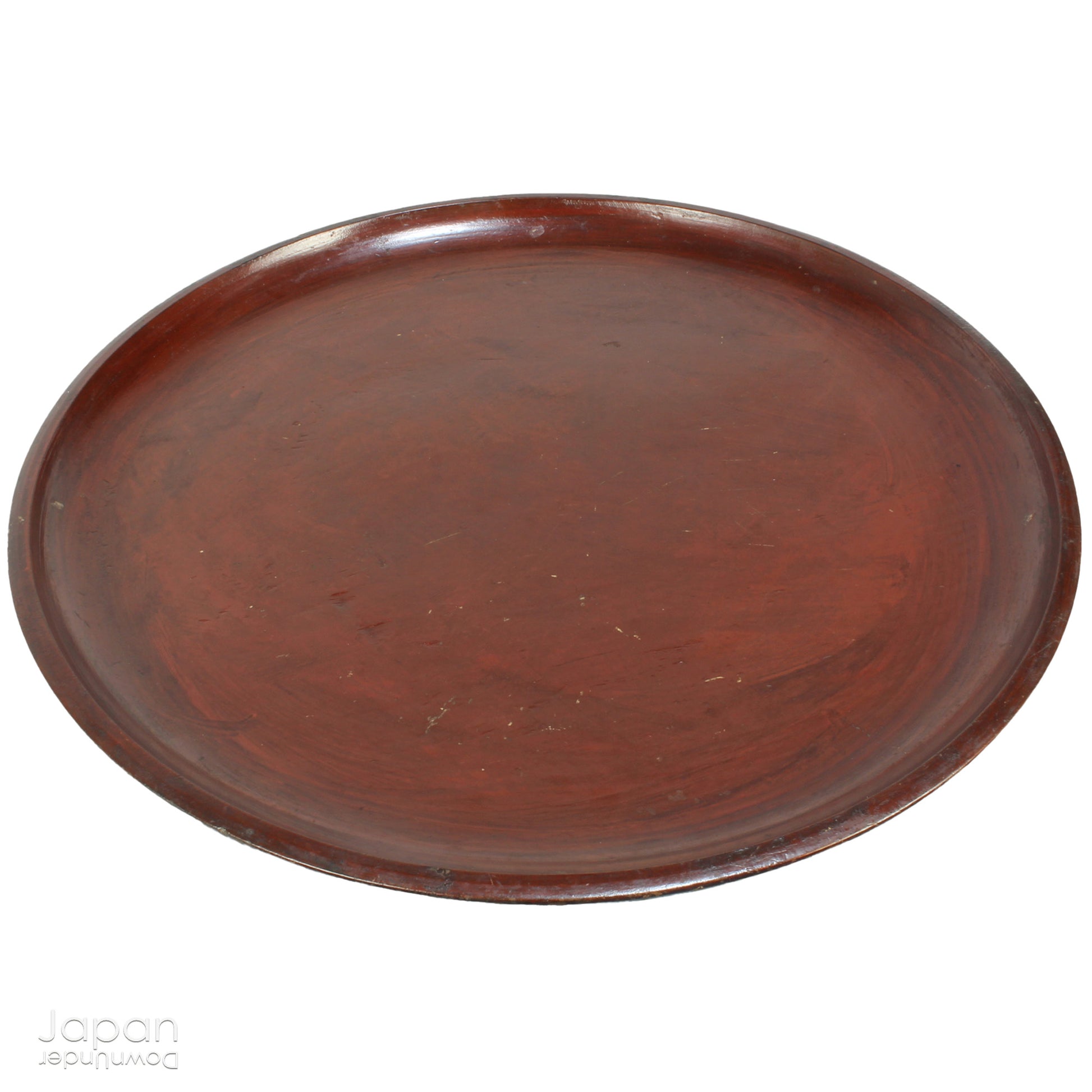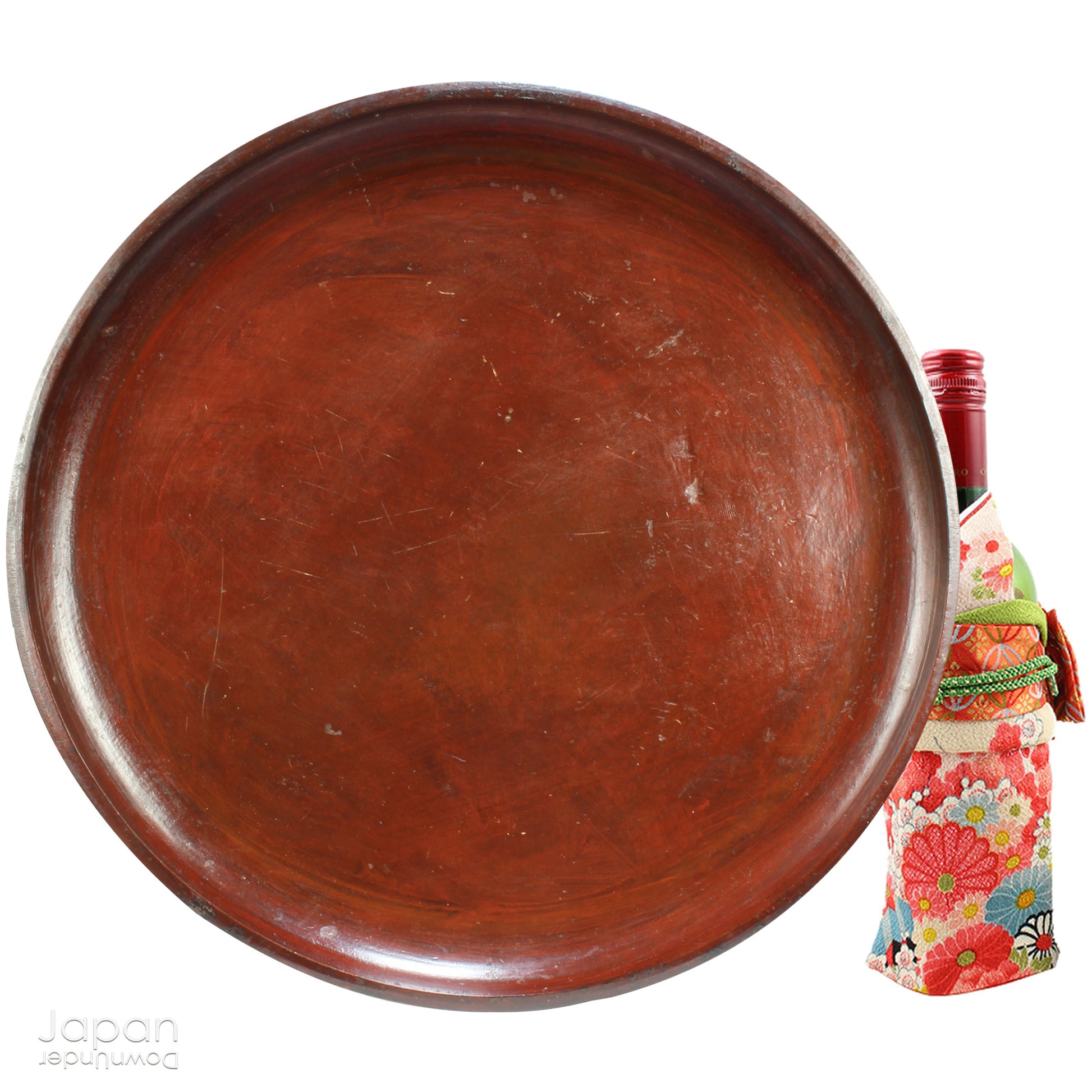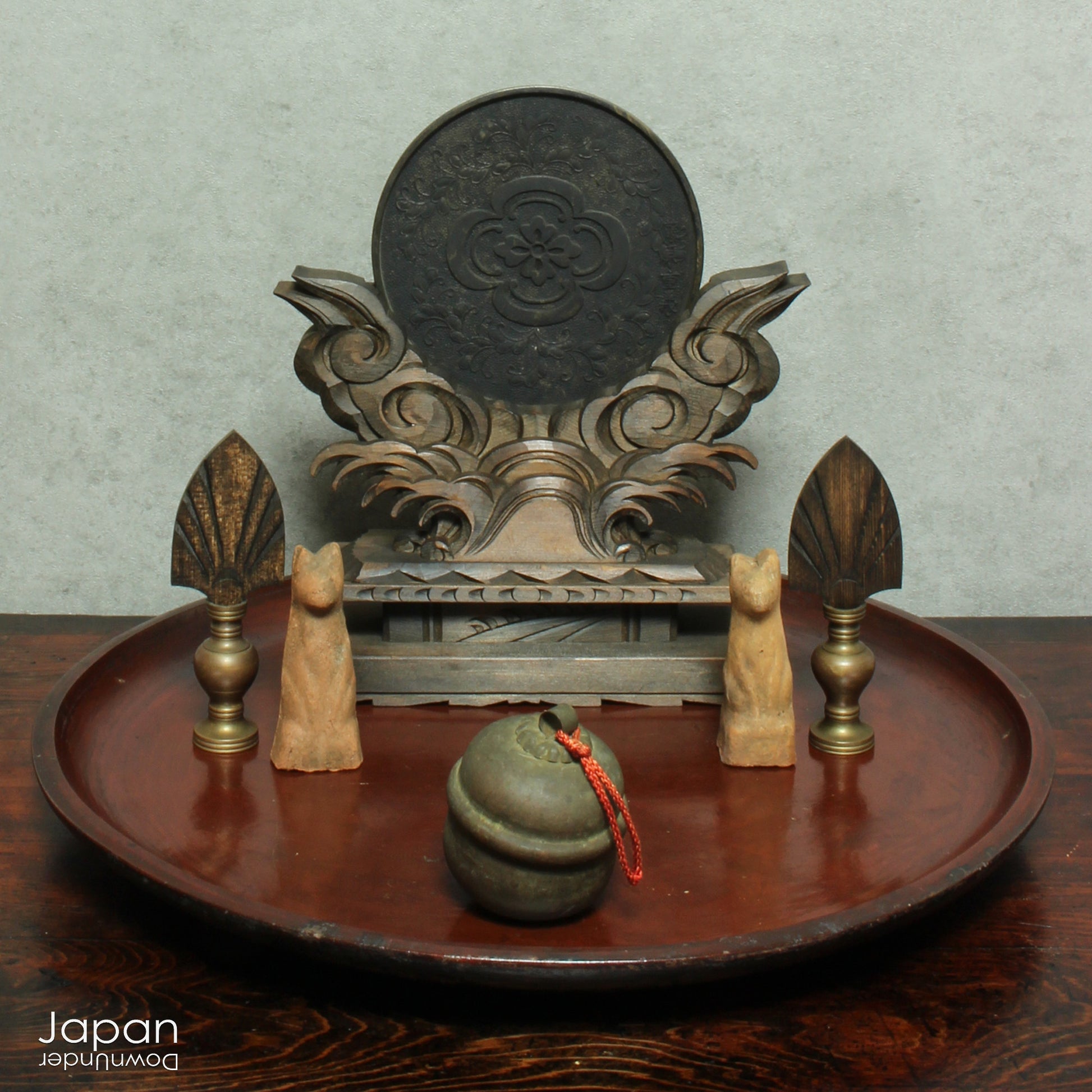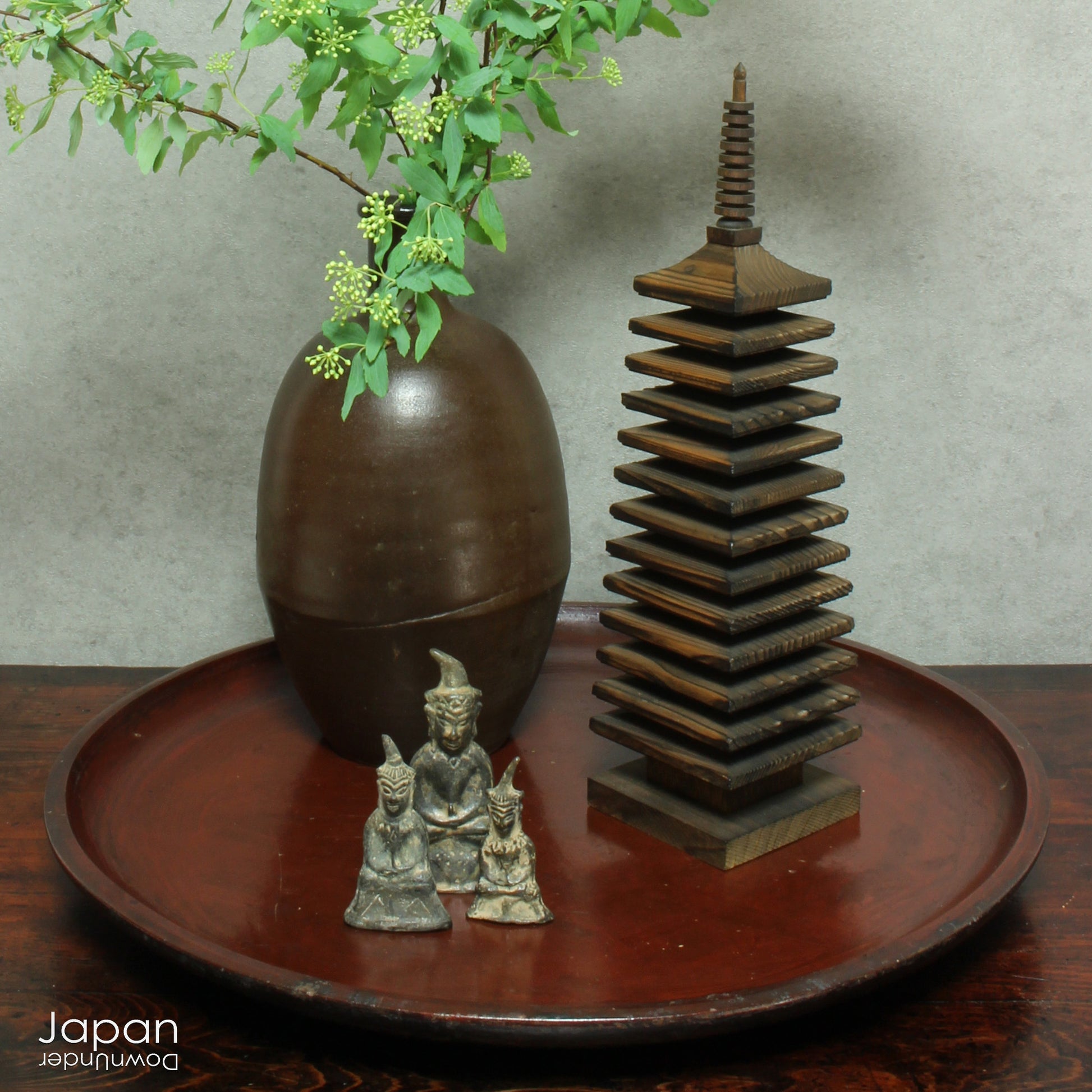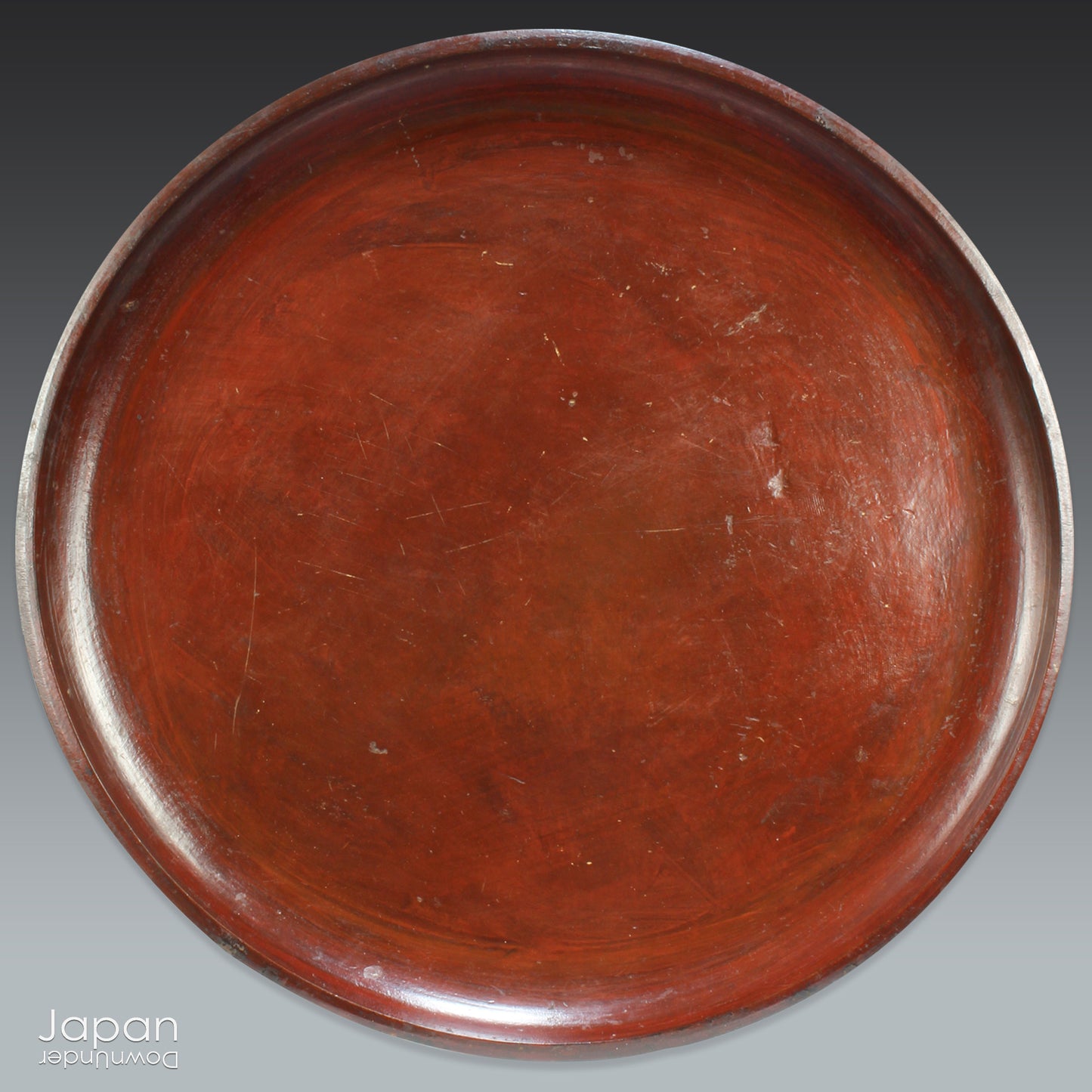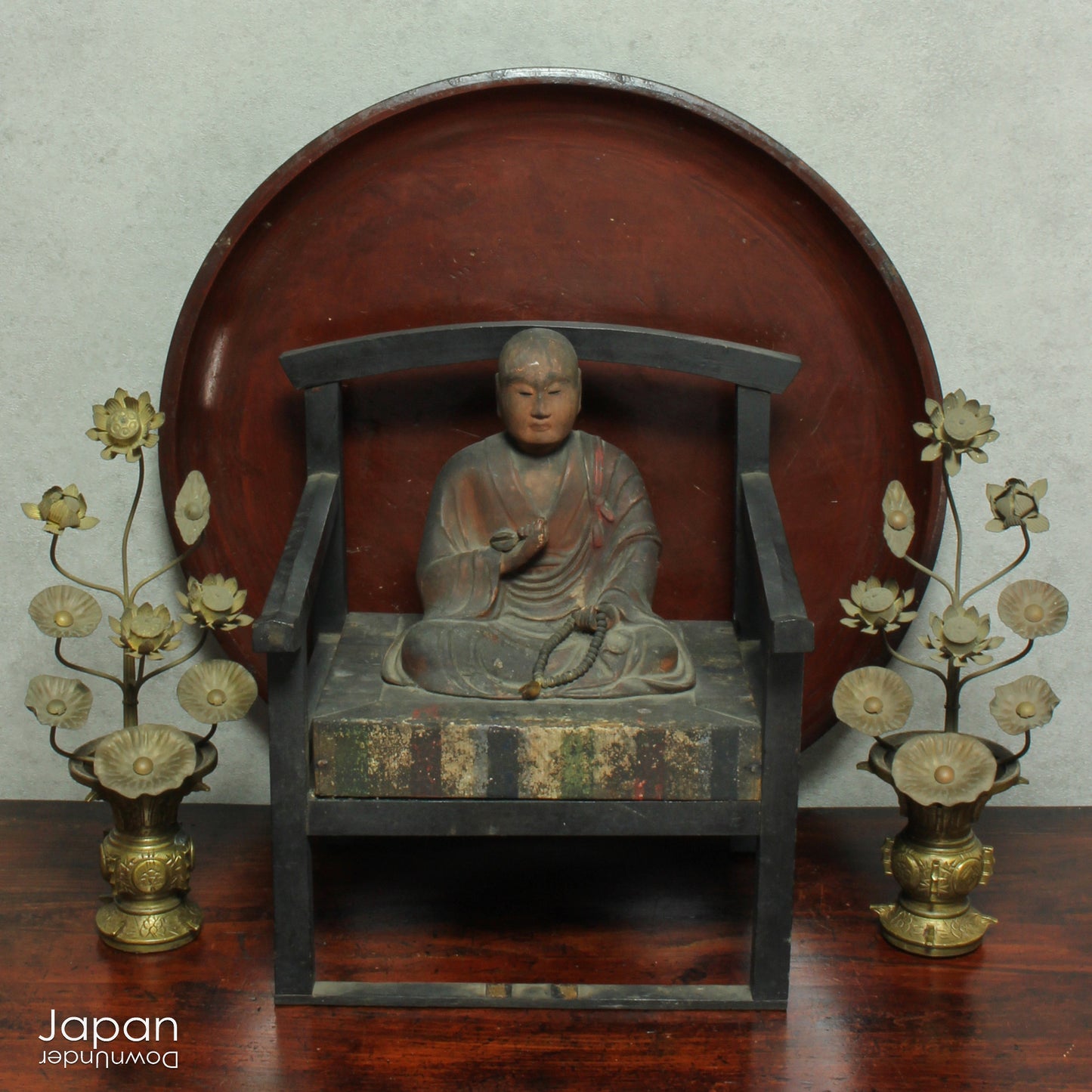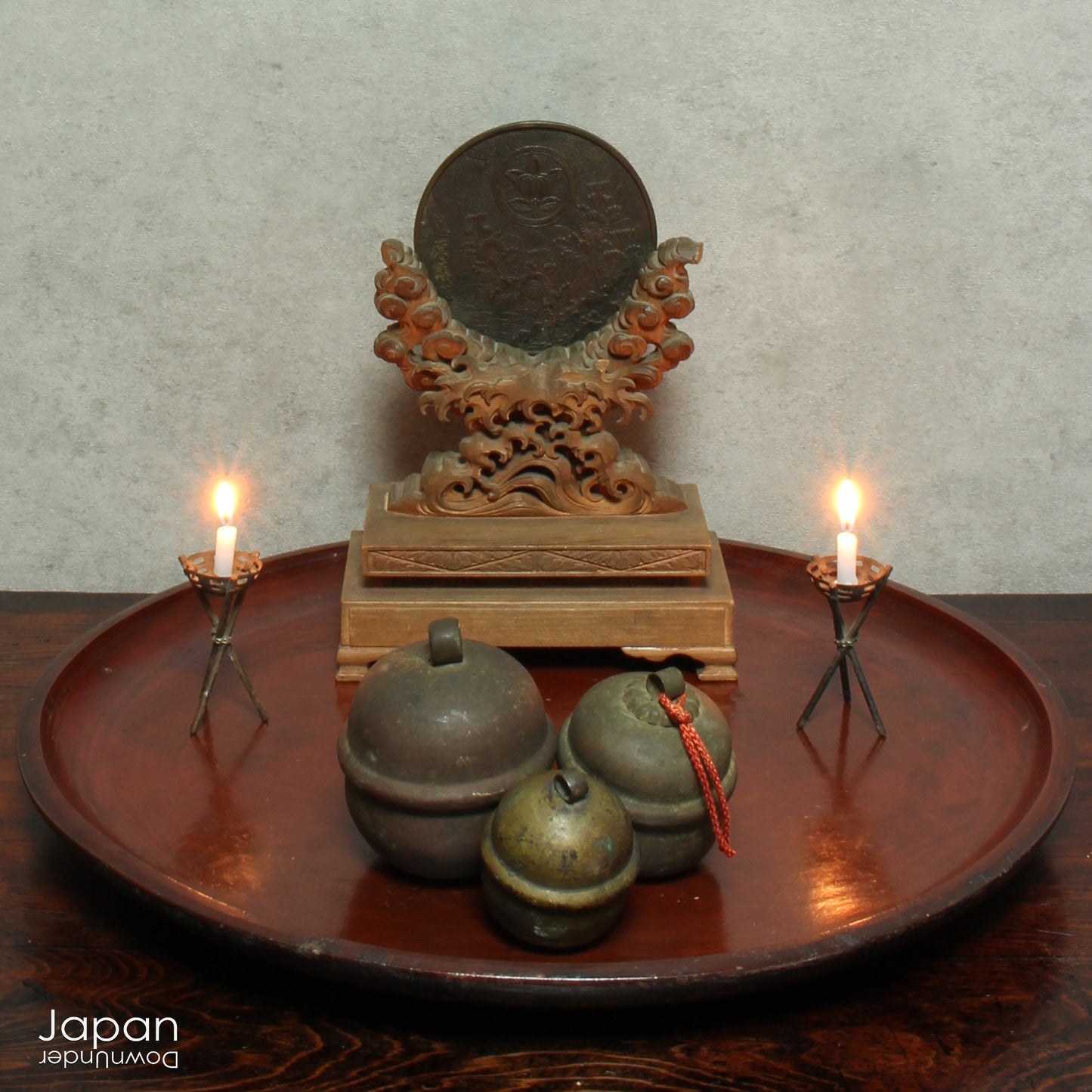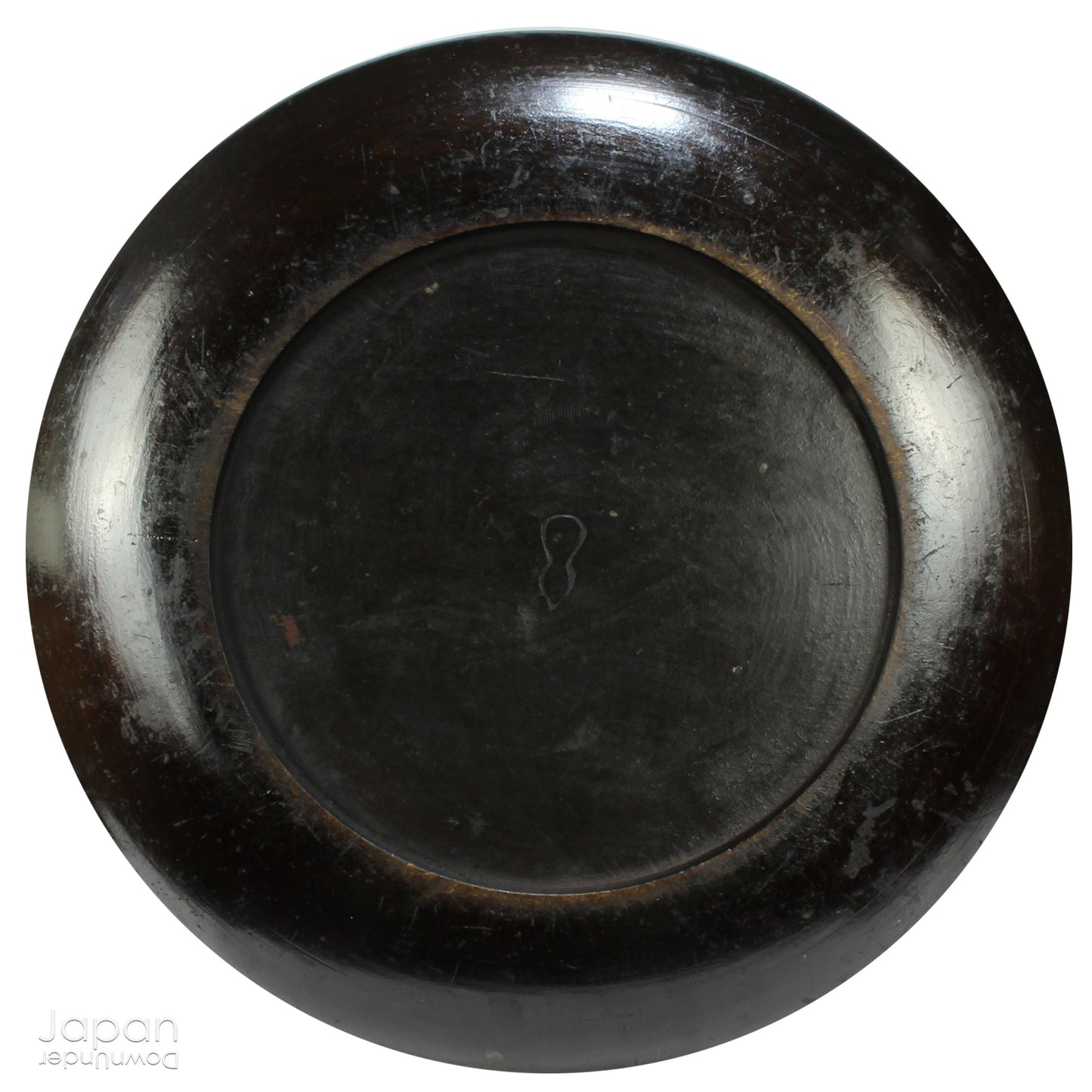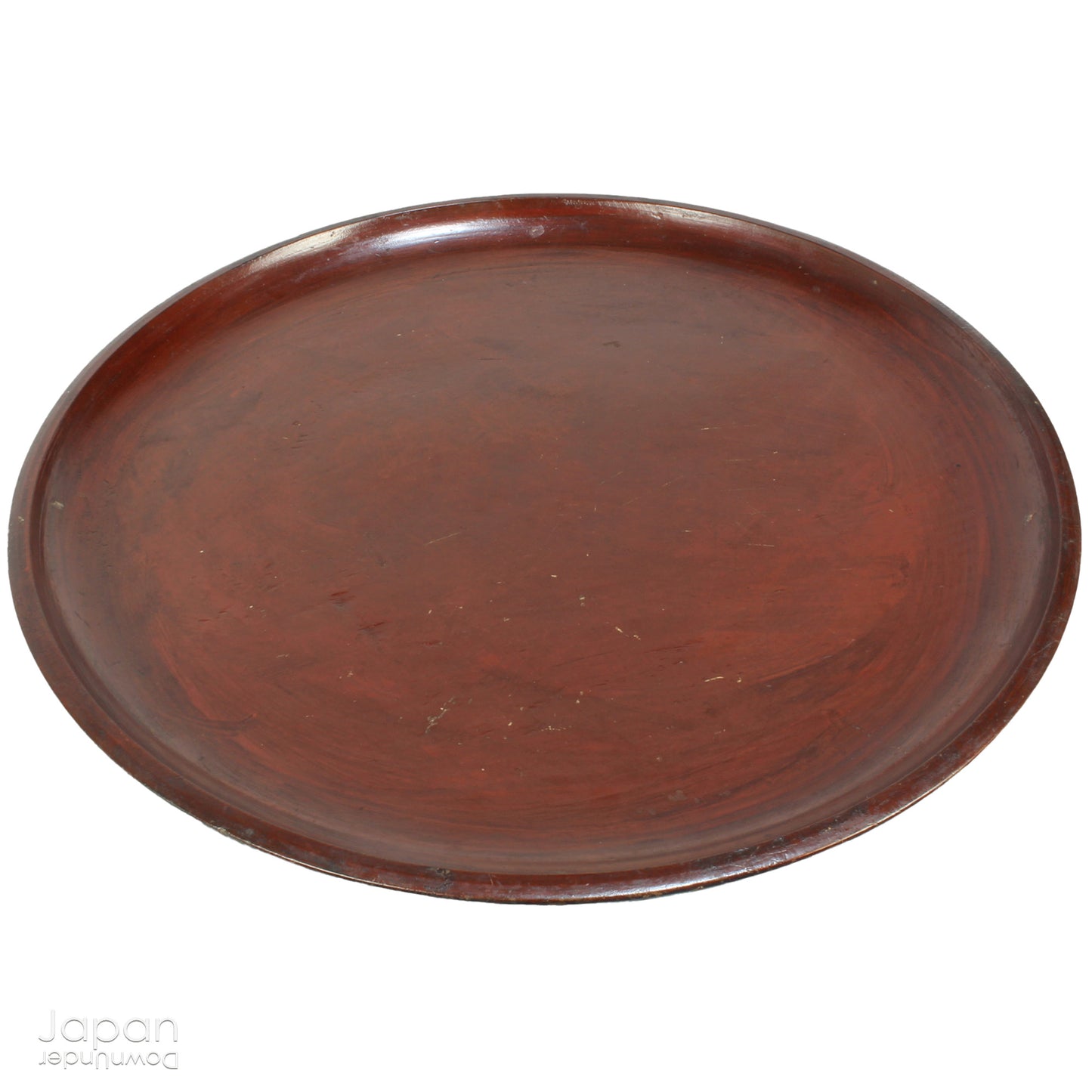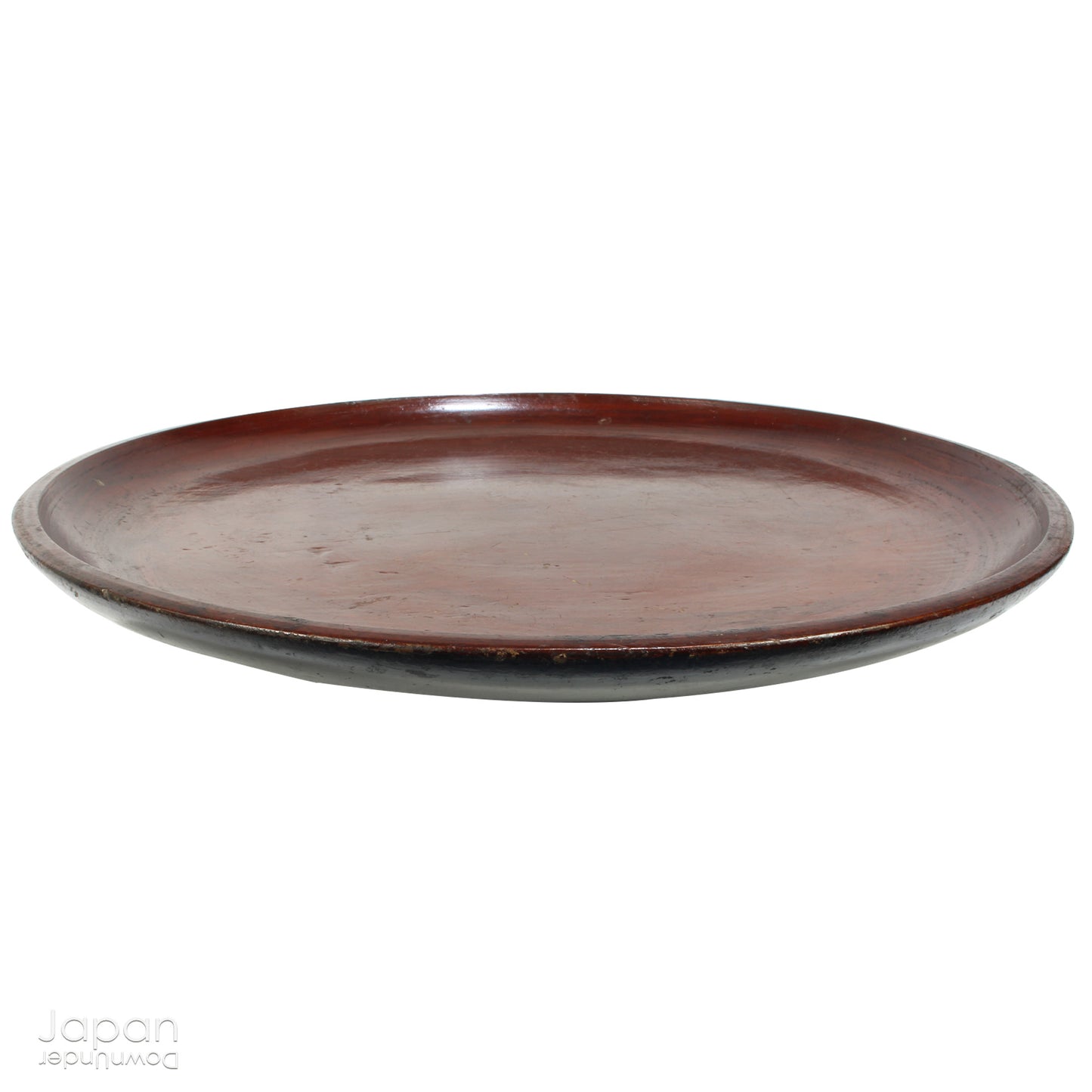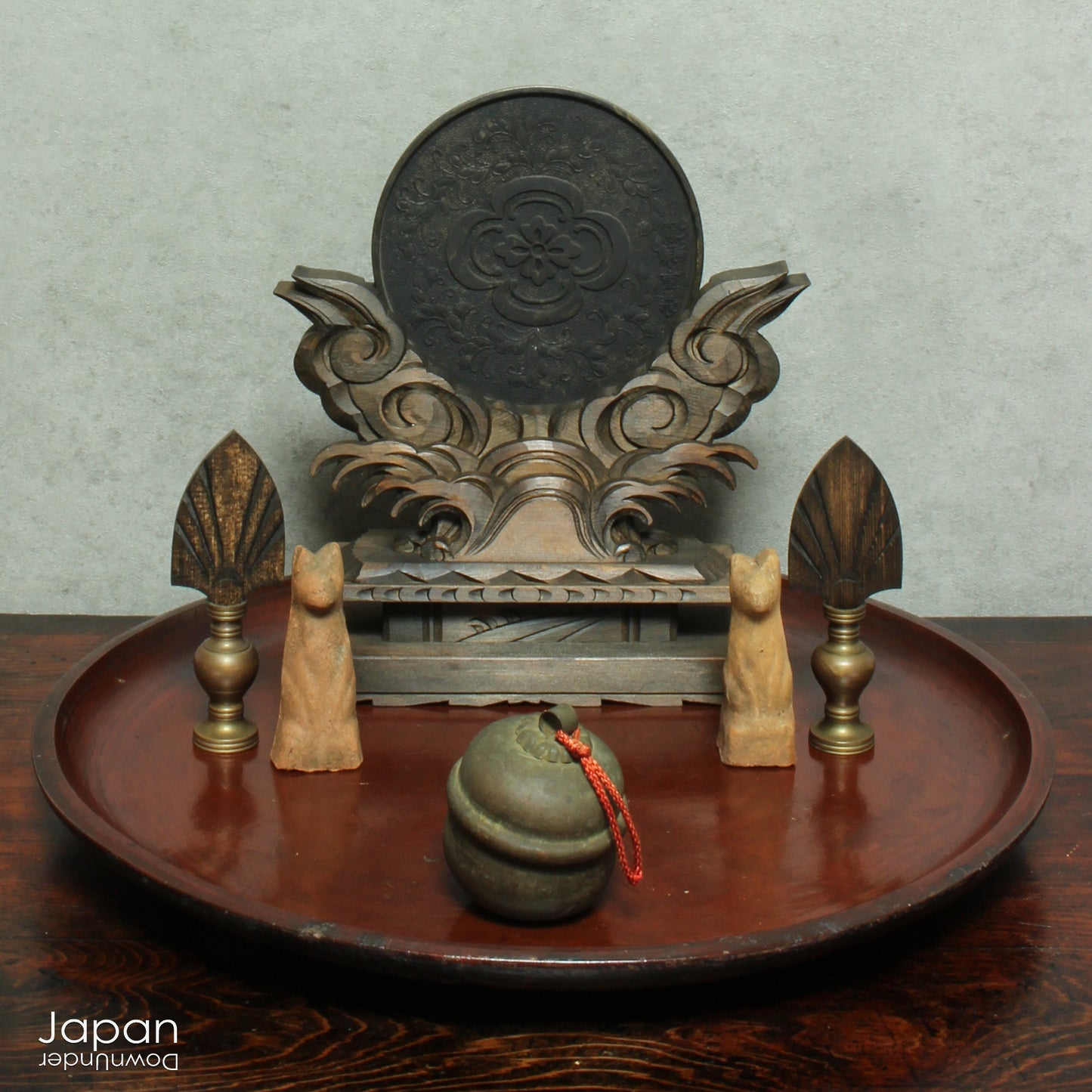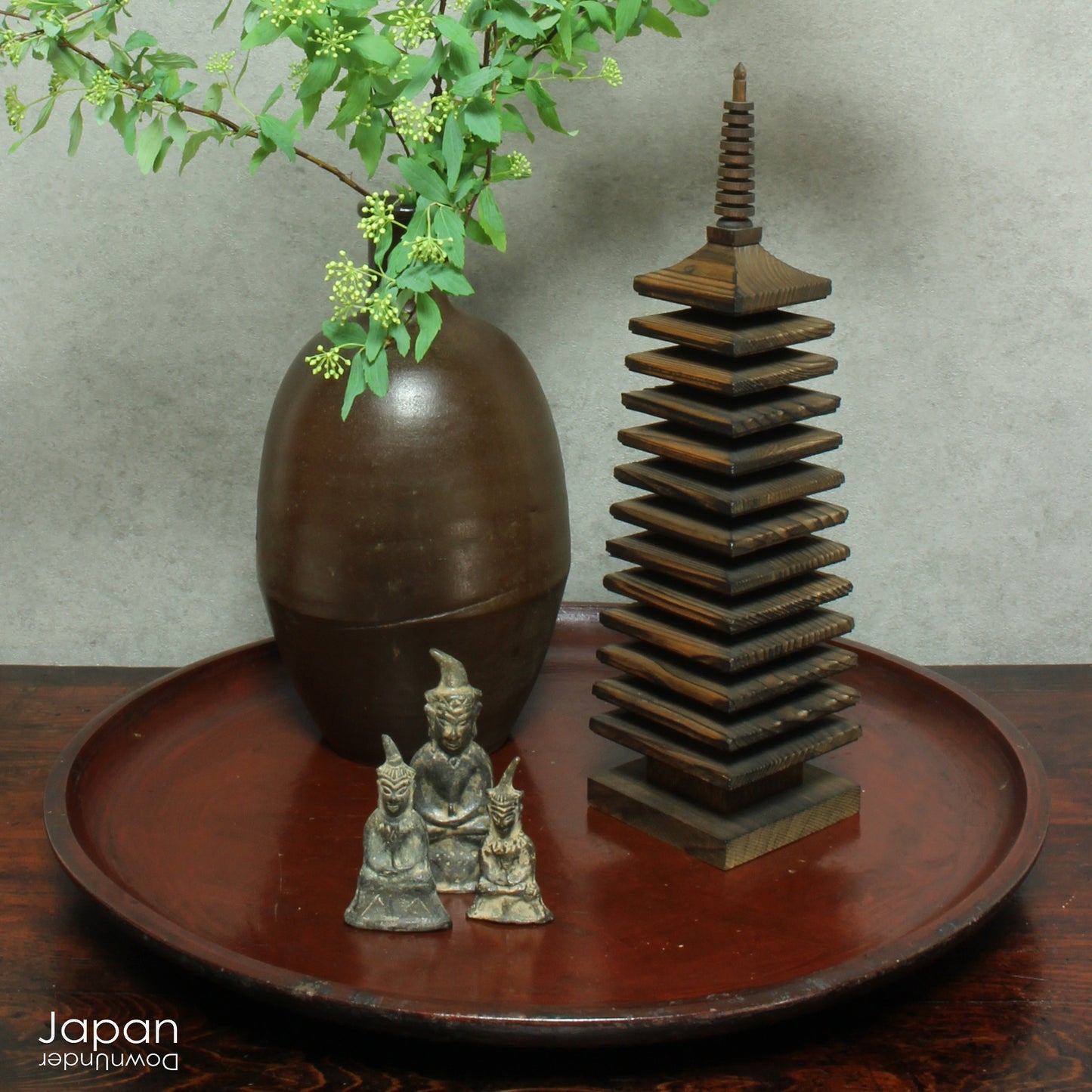JapanDownUnder
1800’s japanese folk art lacquer tray - art object with beautiful patina
1800’s japanese folk art lacquer tray - art object with beautiful patina
Couldn't load pickup availability
Love Japanese Style like We Do
A stunning 1800’s Japanese folk art round serving tray. This versatile piece doubles as a unique display stand adding a touch of rustic charm to any decor. The beautiful dark wine red and black color palette showcases the wonderful patina of use, making it a truly one-of-a-kind art object.
The Meiji era tray is Johoji lacquerware. This lacquerware is believed to have a history of some 1,200 years, initially being produced by the monks of the Tendaiji Temple. Known for its durability and beautiful black, and dark red color combination, it was intended for continued daily use by common people. As such there are signs of heavy use adding to the beauty and warmth of this appealing piece.
These kind of utensils, used regularly by country folk were regarded quite lowly in Japan until Soetsu Yanagi (1889-1961) formed the Mingei (folk art) movement in 1926. He found beauty in ordinary crafts for daily use. He argued that true beauty could be found only in the objects made by unknown people, in a spirit of selfless innocence and in close harmony with nature. Since then, these now highly sought after pieces, have become appreciated for their rustic mingei folk craft charm.
A larger size, the tray is in good structural condition for its age. These old pieces were carved from one hollowed out section of tree trunk, accounting for their slightly irregular shape. There are scratches to the lacquerware and some surface dents, all adding to it’s antique charm.
A wonderful relic with a striking classical shape and presence.
- measures around 42 cm (16.5”) in diameter x 4.5 cm (1.8”) tall.
- weighs 840 gm.
(listing for tray only)
SHIPPING INFORMATION
- please read our shipping notes in shipping policy.
- we use recycle packaging and wrap for safety, rather than appearance.
ABOUT OUR VINTAGE, ANTIQUE AND OTHER ITEMS
We list pieces we feel are worthy of display. There may be scratches, dents, fading and signs of wear and tear. We try to explain the condition of each item exactly, but may miss something.
Information regarding the item and it’s age is obtained from dealers and our personal research. We do our best to give you the correct information but please be aware that we cannot guarantee this information.
Please message us prior to purchase with any questions you may have about our products.
LINK TO OUR ETSY HOMEPAGE: https://japandownunder.etsy.com
JOHOJI LAQUERWARE
Johoji lacquerware, produced in Iwate Prefecture, is believed to have a history of some 1,200 years, beginning with lacquerware produced by the monks of the Tendaiji Temple.
The characteristics of this lacquerware are it’s durability and the beauty of the black, vermilion, and dark wine-red that are it’s dominant colors. It is intended for continued daily use, and the more lovingly it is handled, the more it will reveal it’s inherent natural luster.
The techniques of Johoji lacquerware have been widely applied in the restoration of the Kinkakuji (Golden Pavilion) in Kyoto and the Toshogu Shrine at Nikko.
MINGEI
Mingei are the tools and utensils that were used daily by the common people in Japan. They were inexpensive, simple and functional. Usually produced by hand, in large quantities, their artists were anonymous. They became representative of the local area where they were produced.
The word Mingei combines “min” meaning common people and “gei” meaning art - the art of the common people. It was coined by the Japanese philosopher Sōetsu Yanagi. He found beauty in ordinary crafts for daily use and argued that true beauty could be found only in the objects made by unknown people, in a spirit of selfless innocence and in close harmony with nature.
